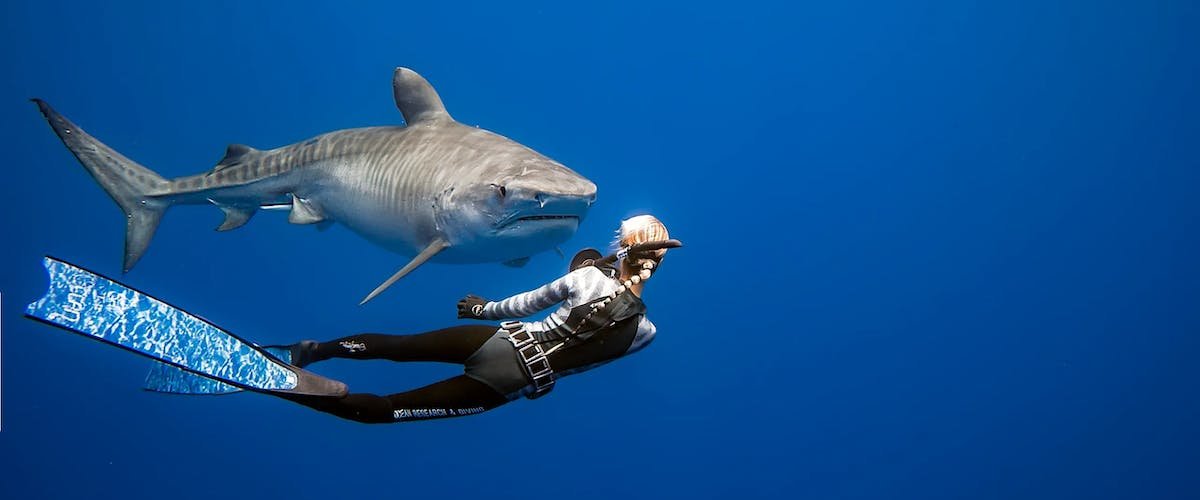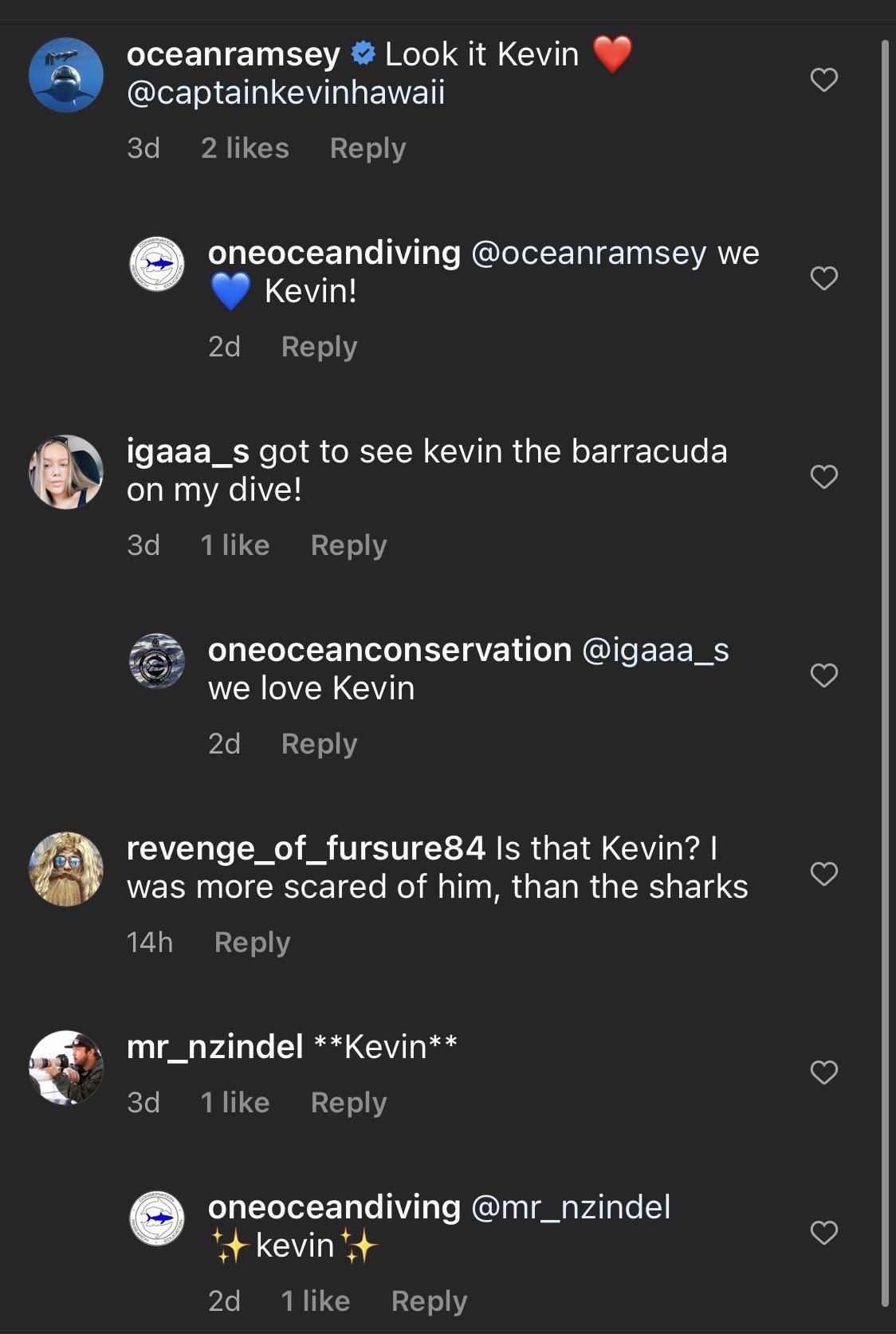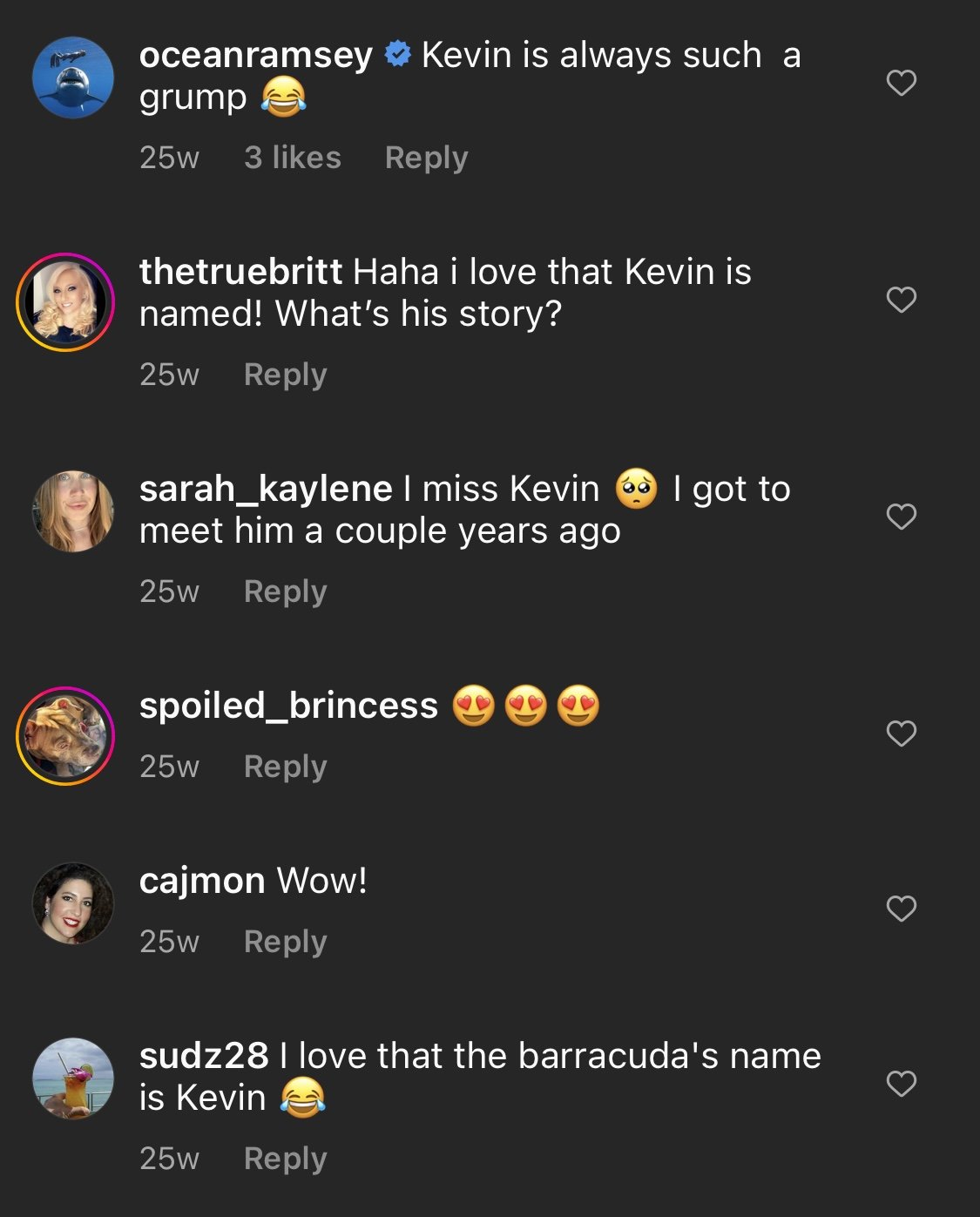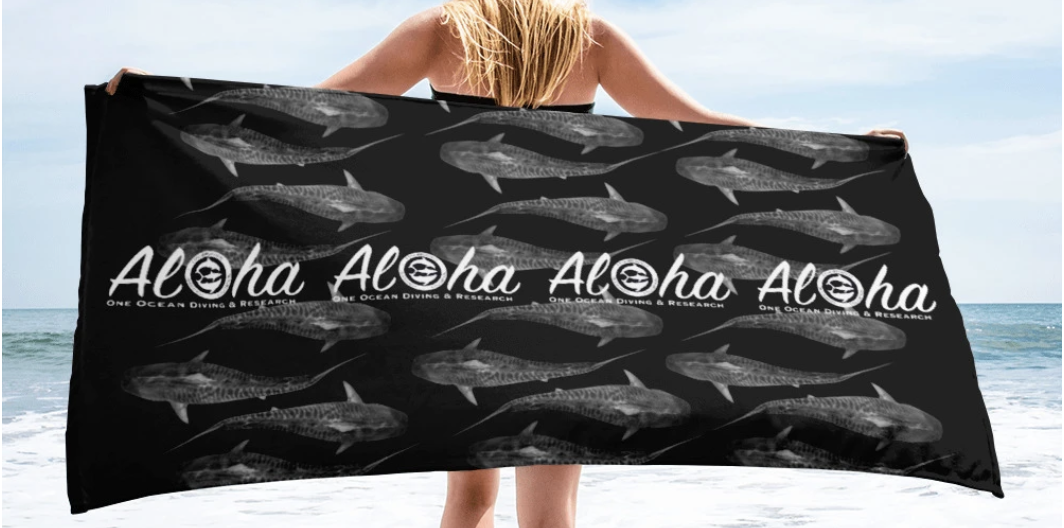While cage-free diving with sharks is a fast-growing industry, with many saying it’s a must to experience in aggregation zones all over the world, it’s a new concept—considering cage diving hadn’t even been attempted until the 1960s.
Ron and Valerie Taylor, Alf Dean, and Rodney Fox are credited by scubaverse.com as the first to attempt a cage dive around Dangerous Reef and other places along the South Australian Spencer Gulf.
The idea came from a great white shark attack, reports adventure.com. As Fox was competing to keep his title as South Australian Spear Fishing Champion in 1964, he became the first recorded white shark victim to live to tell the tale.
“I thought I’d been hit by a train,” Fox writes in his book, Sharks, the Sea, and Me. “My chest was clamped, like in a vice. I was a bone in a dog’s mouth.”
southaustralia.com
A year later, Fox had the idea: what if people could pay to see white sharks from a cage the same way they would lions and tigers in a zoo? In starting this journey, he also became the first to film great whites underwater, which earned him the job of filming footage used in the 1975 film Jaws.
“At this time, we had no idea that this movie would give the shark such a bad image,” he said.
In the late 70s, Fox started the first-ever shark cage tours open to the public.
A decade later, cage diving was practiced sporadically around South Africa’s Struis and False bays, which eventually launched a prominent and competitive touring industry there.
The first crew to attempt the dive without a cage did so for the National Geographic documentary Blue Wilderness in 1992 off Gansbaai, South Africa. Over a period of six hours, four scuba divers made the plunge among at least seven great whites without the protection of bars. Among these divers were Ron and Valerie Taylor, two of the first cage divers in history. Each of these divers took from this experience, if they didn’t already know, that white sharks had been mischaracterized by media and weren’t as dangerous as they seemed.
Juan Oliphant and Ocean Ramsey had been diving cage free on their own through the early 2000s, getting to know the sharks off O‘ahu’s North Shore. In 2014, they launched One Ocean Diving, the first educational cage free snorkel program in the United States.
It was a different climate back then, Ramsey writes in her book, What You Should Know About Sharks. In the early days, it was difficult to get people to want to join them outside of a cage with sharks.
“When I was growing up, sharks were regularly portrayed as monsters (as sometimes they still are), but it was shocking and very unpopular at the time to hear anyone saying otherwise,” she writes. “There were very few people on the planet purposefully diving with them, especially white sharks.”
Today it’s a different story. People travel from all over the world to experience what the divers at One Ocean do.
Untwining the narrative that sharks are dangerous and should be killed is valuable not just for the ecotourism industry but for the health of our oceans, Ramsey writes in her book My Shark Teachers.
“If I hadn’t learned from sharks that I can coexist and that I can share a different perspective for them, then we wouldn’t have been able to gain so many supporters that resulted in getting the law passed in Hawaii to legally fully protect sharks,” she writes. “Recently we were also able to be part of getting over 1.3 million votes, within a short period of time, to require parliament to consider banding shark finning in European Union.”
Like all apex predators in their respective environments, sharks have a keystone role in the ocean. By preventing prey fish from populations from proliferating, they maintain reef health. This benefits not only marine animals but land animals too.
Cage-free shark diving, with proper education and safety protocol, is not only safe, but it’s even saving lives—the lives of sharks. In this way, it creates a path for healthier oceans.












